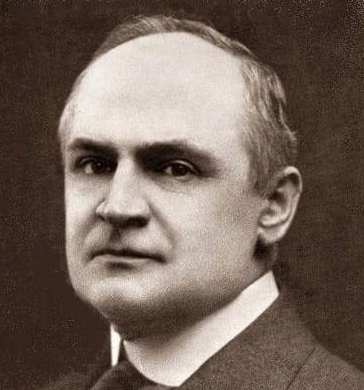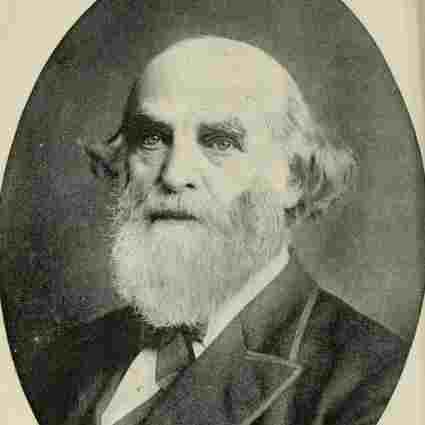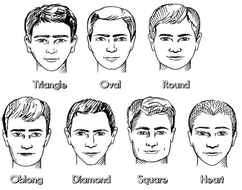SelfDefinition.Org
Practical Memory Training
'Theron Q. Dumont'William Walker Atkinson
(1916)

Lesson 28 How to Remember Faces
https://theskincareedit.com/2016/08/31/how-to-figure-out-your-face-shape
Faces are easier to remember than are names—this becausc the eye-memory is employed in the former instance, while, in the latter, only the ear-memory is called into operation, unless one follows the plan of writing down the name, or of visualizing it as it appears in writing or print. As a rule, the impression of eye-perception is stronger than that of ear-perception—although, in the case of musicians, etc., the rule may be reversed by reason of the powerful operation of interest and habit, as we have seen in preceding lessons.
But there is great room for improvement in the matter of the memory of faces, in the case of the average person. Many, in fact, are sadly lacking in the power to remember, recall or recognize faces, although such power is recognized as being very important in business and professional life. Some persons, whose occupation is such that its success depends largely upon the ability to recognize the faces and personal characteristics of those with whom they come in contact, have developed this faculty to a wonderful degree. In the case of detectives, bank tellers, etc., this form of memory is manifested to an extent almost incredible to the average person. The secret, of course, lies in (1) interest, and (2) practice. In short, their memory finally acquires the habit of recalling and recognizing faces.
Now, there is a great difference between the recollection and the recognition of faces, names, printed words, etc. It is much easier, as a rule to recognize a thing once seen or heard when it is subsequently seen or heard, than it is to recall the thing without the reviving sight or sound. Recent experiments with college students have shown that the ratio is about three to one in favor of recognition and against recollection. The tests were made by displaying on the black board a list of a hundred words, which the students tried to impress upon the memory in a short time. After making the test, the matter was allowed to drop for the time being.
Several weeks afterward, a trial showed that very few of the hundred words were recalled by the students. But, when these hundred words were shown on a printed sheet, mixed up among several hundred other words, the body of students showed a greatly increased power of recollection, and were able to recognize quite a fair percentage of the hundred words. In the same way, we seldom are able to picture in our imagination the features of the persons we meet for the first time, though we may be able to easily recognize their features when we see them the second time, though we may not be able to "place" the person by name, or recall the circumstances of previous perception. The recognition in such cases, of course, is not a full recognition but merely the partial recognition of having seen the features before, under circumstances which we fail to remember.
The student who has followed my thread of thought in these lessons, must now see just what remedy I am about to offer to those who have trouble in remembering faces. He knows first that I am about to recommend and prescribe a study of faces, in order to awaken interested attention for them. He knows, further that I am about to recommend a detailed analysis and study of the faces which he wishes to remember. He knows, further—I trust—that I shall recommend the practice and habit of "visualizing" faces, and reviving them in memory, for the purpose of making clear impressions of them upon the subconscious records. He, also, knows that I shall recommend associating the faces with the names of the persons to whom they belong, and also with the circumstances of the meeting with such persons. Bright student, to have perceived my intentions—"go up to the head of the class!"
But, seriously, if you have followed me closely, and grasped my principles, you should be able to indicate my prescription in this case, for it is based on the fixed and certain principles of memory which I have laid down in these lessons, and which I have tried to fix in your memories by repetition and presentation in different forms of expression, so that you might view them from all angles and under many aspects of application. Get the principles well fixed in your mind, and you will have no trouble in making out the prescription for special cases, or in applying the principles in the right manner.
THE STUDY OF FACES. Many persons have sufficient interest in faces to cause them to study faces, features, and personal appearance, almost without knowing it. But others, not having this natural interest, are apt to forget the fact that there is any such subject of study. The first class receive sharp, clear impressions of faces, while the others allow the impression of this class to slide from the perception like the proverbial water from the back of the duck. From what I have said in preceding lessons, you must realize that if you will but awaken an interest in the subject and study of faces, and personal appearance, you will find it much easier to remember them—in fact, such recollection will soon become second nature to you, and will operate almost without effort on your part.
The study of the human features is known as physiognomy. There has been much nonsense written on, or around, this subject, but there is a firm basis of truth underlying the subject. Even if one fails to agree in the interpretation of the meaning of certain facial characteristics, there will be sufficient interest left in the analysis of these features into classes and kinds, so that the mind will think of and remember them in this way. Remember, when you begin to analyze a thing, you begin to remember it more clearly—this is affixed rule of phychology, and a feature of association of ideas, as you have seen.
Brushing aside the details of the subject (for which I must refer you to any good work of physiognomy) I shall now call your attention to a few of the leading characteristics of the human features, from which a logical classification has sprung. Fix these classes in your mind, and use the scale to analyze the features of those whom you wish to remember. The principle of association by the rule of resemblance and difference arising from comparison of features of the person with those of other persons, will be found to operate in this case as in all others of the kind. You will remember one man more easily because he has a nose resembling that of another person whom you know very well—and so on. The very fact of the analysis, comparison, and final classification, causes you to notice and observe the features carefully, and this, of course, results in elear memory impressions.

Nelson Sizer 1812-1897
Just as there are no two blades of glass exactly alike, so are there no two human faces exactly alike, though many resemble each other very strongly. Nelson Sizer, the great American physiognomist of earlier days, well said: "Though all human beings have the general human form-and features—though all have eyes, nose, mouth, chin, etc, yet each one has a different face and look from another." And, as Flaubert said to Maupassant (see the quotation given in a preceding lesson: chapter 20), "There are not in the world two noses exactly alike; one should cultivate the art of observation and perception to a degree where he will perceive, and describe, each particular nose, or other feature, or face, in such a manner as to particularize it, and so distinguish it from all similar objects in the whole race, so that it will always be recognized when seen, and identified with its registered impression."

Shapes of Faces. Faces may be classified as follows: (1) Round Faces; (2) Oblong Faces; (3) Pear-shaped Faces; (4) Square Faces; (5) Oval Faces, of two kinds, viz., (a) the larger-end uppermost, and (b) the smaller-end uppermost; (6) Broad Faces; (7) Narrow Faces. This classification is very broad, for there are many variations and combinations—but it will serve as a working scale.
Chins. The first rule of classification of chins, is that of drawing an imaginary line from the root of the nose, exactly between the two eyebrows, thence downward in a straight plumb-line. In the perfectly symmetrical face, this line will just graze the upper lip and chin, but in the majority of cases the chin will either (a) protrude beyond the line, or else (b) recede from it. Hence the first classification (1) Protruding Chins, and (2) Receding Chins. The first is generally regarded as indicating strength and the latter weakness. There are many degrees in this scale, of course. Subsequent classification of chins, proceeds as follows: (1) Broad-Square Chins; (2) Broad-Round Chins; (3) Narrow-Square Chins; (4) Narrow-Round Chins. Physiognomists hold that, in chins, broadness denotes practicability—narrowness, ideality—roundness denotes feeling—squareness, will. A projecting, pointed chin is held to indicate miserliness; and a dimpled, indented chin, is regarded as indicating the artistic temperament, and a desire for love.
Jaws. The law of the human face, is classified as follows: (1) Broad, firm jaws; (2) Narrow, firm jaws; (3) Broad, loose jaws; (4) Narrow, loose jaws. A firm jaw is generally field to indicate the fighting tendency—the loose jaw, the reverse.
Mouths. Human mouths are interesting. The old Oriental proverb runs: "A man's eyes show what he might have been; his mouth shows what he has been, and is." Mouths may first be classified as (1) Large; and (2) Small. These may then be divided into (a) upward-turned corners; and (b) downward-turned corners. Then Lips may be regarded as Tightly-Closed, or Loosely-Closed; or as Full or Thin; also as Refined or Coarse; or as Protruded, or Drawn-in; or as Straight, Crooked, Slanted, etc. Again, they may be divided into Red, or Pale, in varying degrees; Hard or Soft. Or again, as Long-upper lip, and Short-upper lip. In case of mustaches, the lip classification is capable of further elaboration. The teeth are also subject to classification.
Eyes. Eyes have infinite variety. The leading classifications are as follows: Wide, Narrow, Widely-opened, and Narrowly-opened; Large eye-ball, and Small eye-ball; Firm-glance, and Shifting-glance; Far-apart, and Close-together; Straight eye-lids, and Drooping eye-lids, etc. The eye-brows are also worthy of attention and analysis, the classifications being so apparent that no special note is necessary regarding it. Eyes may also be classified by colors, of course.
Ears. Some physiognomists consider the ear to be the most reliable indicative feature of the face. They divide ears in three general classes, as follows: (1) Round ears; (2) Oblong ears; and (3) Pear-shaped ears. They hold that the degree of delicacy in the moulding of the ear, indicates the comparative delicacy of feeling in its owner.
Noses. Noses are generally classified as follows: (1) Roman; (2) Grecian; and (3) Cherubic, or "Baby-like"—with many degrees of each, and many variations. Noses may be observed as to Bridge, Point, and Wings. Nostrils may be observed for the qualities of size, degree of openness, etc.
Hair. Also study and classify the color and character of the hair.
A study of the above organs, from the viewpoint of the physiognomist, who seeks to interpret each in human character, will develop quite a degree of new interest in the subject. If you are "weak on faces," take up the study.
General Appearance. Along these same lines, the student should make a study of the general appearance of the persons he meets—their general personal characteristics, walk, carriage, little personal tricks of action, etc. Bind these together in your bundle of impressions regarding the person, and you will have a very strong associated impression of him.
In studying the facial characteristics of a person, follow the general rule of perception I have already given you—begin with the general appearance and proceed to the details in due order.
[Page 272 is missing in the scan. Page 273 continues ... ]
... of noses, mouths, eyes, ears, etc. This book will aid you in classifying and studying features, so that you will easily remember them.
Finally, the "eyes are the windows of the soul"—so specialize in studying eyes, classifying them by expressions, as well as by shape—for if you once really get to know the EXPRESSION of a person's eyes, you will never totally forget the person. The expression of his eye will bring you nearer to a full knowledge of his real personality, than will anything else about him. So, try to "memorize" one's eyes, even though you neglect all the rest of his features.